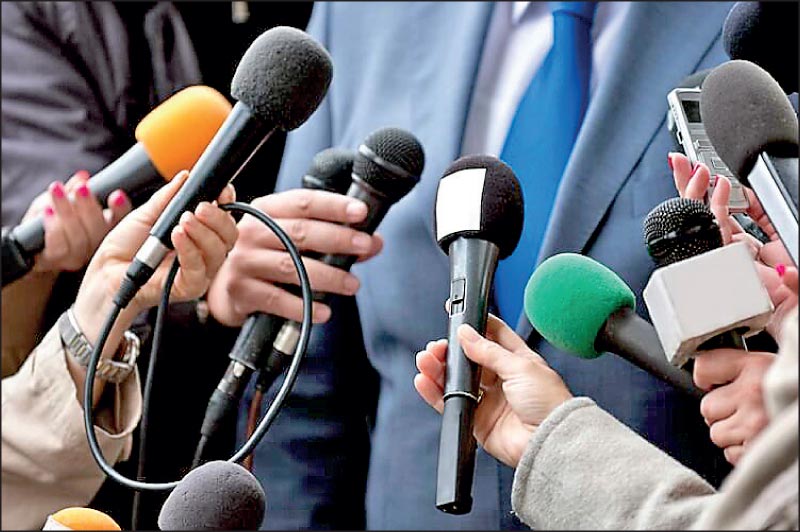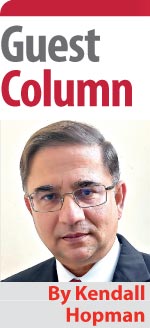Tuesday Nov 18, 2025
Tuesday Nov 18, 2025
Friday, 28 July 2023 00:25 - - {{hitsCtrl.values.hits}}

Credibility, in the era of PR, is an important area of convergence – of media, PR professionals and their clients
 When I became a journalist 40 years ago, our profession did not have access to computers. The internet, mobile phones and social media would have been considered science fiction. Stories were hammered out on typewriters and background information sourced from dusty files in the newspaper’s own library of clippings from editions past.
When I became a journalist 40 years ago, our profession did not have access to computers. The internet, mobile phones and social media would have been considered science fiction. Stories were hammered out on typewriters and background information sourced from dusty files in the newspaper’s own library of clippings from editions past.
Fast forward four decades, and information swamps us. Access is instant and truly at our fingertips. Research and fact checking are fast and easy, and if one feels so inclined, AI can be enlisted to do the writing.
Does this mean that the accuracy of the information we receive today, and consequently the credibility of the media that brings that information to us, is at an all-time high? Paradoxically, the answer is not the unequivocal yes that one might expect. Incredible stories that boggle the mind abound, and clickbait is being swallowed hook, line and sinker.
But what does all this have to do with the profession of Public Relations? A great deal.
It is not to be mistaken with coercion, but some form of Public Relations has been in existence from the time man felt the need to persuade fellow men, but the evolution of PR into a profession and its exponential growth especially in the West, is often attributed to the perceived erosion of the credibility of advertising. Because advertising is paid for and the space or air time is owned by the advertiser, its message can be received with scepticism. PR content, on the other hand, uses “earned media” and has to pass the scrutiny of the media that owns the space or air time, and hence is expected to be more credible. As the bestselling author and pioneer of the concept of positioning Al Ries and his daughter Laura say in their book The Fall of Advertising & the Rise of PR, “Advertising is what you pay for; PR is what you pray for.”
Credibility, therefore, is one of the fundamental pillars of PR. Admittedly, the profession learnt this the hard way, over the decades when PR practitioners earned the moniker ‘spin doctors’ for their efforts, especially in the sphere of political PR. Spin doctors still do exist, but today, it is a fundamental axiom that no amount of PR can help a bad case. Could PR have saved Richard Nixon from the fallout of Watergate, widely considered one of the biggest PR disasters of all time? Could a skilled PR person have put a positive spin on former BP CEO Tony Hayward’s famous words “I’d like my life back” when purportedly “apologising” to US Gulf coast residents for the worst oil spill in that country’s history?
It is the PR practitioner’s job to influence clients to keep things honest, even to insist on it. This does not mean reckless disclosure, however. Message management is, after all, part of PR. But ignoring accuracy, ethics, empathy, political correctness, responsibility and such values, is extremely risky to clients and PR professionals alike.
When I was a cub reporter, what passed for on-the-job training was the imparting of clichés, one of which was “Facts are sacred; comment is free.” Even that is not true today. Ill-advised comments can get people into a lot of trouble.
Credibility, in the era of PR, is an important area of convergence – of media, PR professionals and their clients. Our success depends on it. The media (print, electronic, web, digital or social) uses PR content in different forms on trust, even though it is legally accountable for the content after publication. However, all the facts in the content that media receives from PR practitioners cannot be independently verified before publication, broadcast or uploading.
Whether we are media professionals or PR practitioners, how then do we establish the credibility of information we receive, before we pass it on? I depend heavily on Logic, one of the three elements identified as a means of persuasion by Aristotle in his theory of Rhetoric. (The three elements, according to the ancient Greek philosopher, are Ethos – the source’s character and credibility, Pathos – the emotional appeal, and Logos – the Logic). Any information needs to pass the plausibility test, even if its source is seemingly unimpeachable.
Living and working in Sri Lanka, I am regularly amazed by the incredible stories that our politicians, socialites, actors, influencers, hairdressers, beauty queens and many others generate. Stories that burst forth with the incandescence of a Roman candle and then fizzle out from the public consciousness almost as quickly. They defy the logic test, and will not be dignified with any further reference. What is more interesting are the some of the stories seemingly made credible with facts and figures, that grab public attention, secure longevity and respectability and are sometimes quoted and requoted because they have not been put to a simple test – the electronic calculator.
Shortly after the Bandaranaike International Airport reopened after the COVID-19 necessitated closure, a cabinet minister addressing a media conference announced a figure for the number of tourists that were expected to visit the country that year. At the time, the number of flights arriving in Sri Lanka as well as the number of arrivals per day, were restricted. No one present did the arithmetic and so no one pointed out that the arrivals figure given would take 11 years to achieve.
More recently, a bank announced that its self-banking machines had dispensed Rs 7.6 trillion in just 15 days in the lead up to the Sinhala and Tamil New Year. The use of an electronic calculator reveals that based on that figure, the average value of a single withdrawal would have to be Rs. 950,000 in a country where the maximum single withdrawal possible from a machine is Rs. 200,000. A few weeks later, the same bank announced that its total assets were Rs. 3 trillion.
It is the job of the PR professional to ensure that such confusion will not arise, and in doing so to facilitate the flow of accurate and credible information to the public, which is also a primary objective of the media.
The information conduit that PR provides ensures two-way communication between clients and journalists, and Public Relations’ existence as a profession is an affirmation of the importance of the media. Few people now remember that Tomáš Garrigue Masaryk, the founding father of Czechoslovakia, now Czech Republic, delayed the announcement of the independence of that great country by a day to get better media coverage on the advice of his PR consultant Edward Bernays, widely considered the world’s first ideologue of public relations, and the nephew of Sigmund Freud.
Credibility is closely linked with integrity, and I will end with one final illustrative anecdote. In 1933, Bernays turned down a request to provide PR counsel to Adolf Hitler, just before the latter came to power. (A journalist later reported to Bernays that during an interview with Joseph Goebbels, Hitler’s Minister of Propaganda, he had seen a copy of Bernays’ 1923 book Propaganda on the Nazi’s desk.)
(The writer is the Founder CEO of VYA Public Relations, Sri Lanka’s first PR Agency, and has been a senior journalist and political commentator for local and international publications. He is a Founder Member of the recently incorporated Public Relations Association of Sri Lanka (PRASL).)